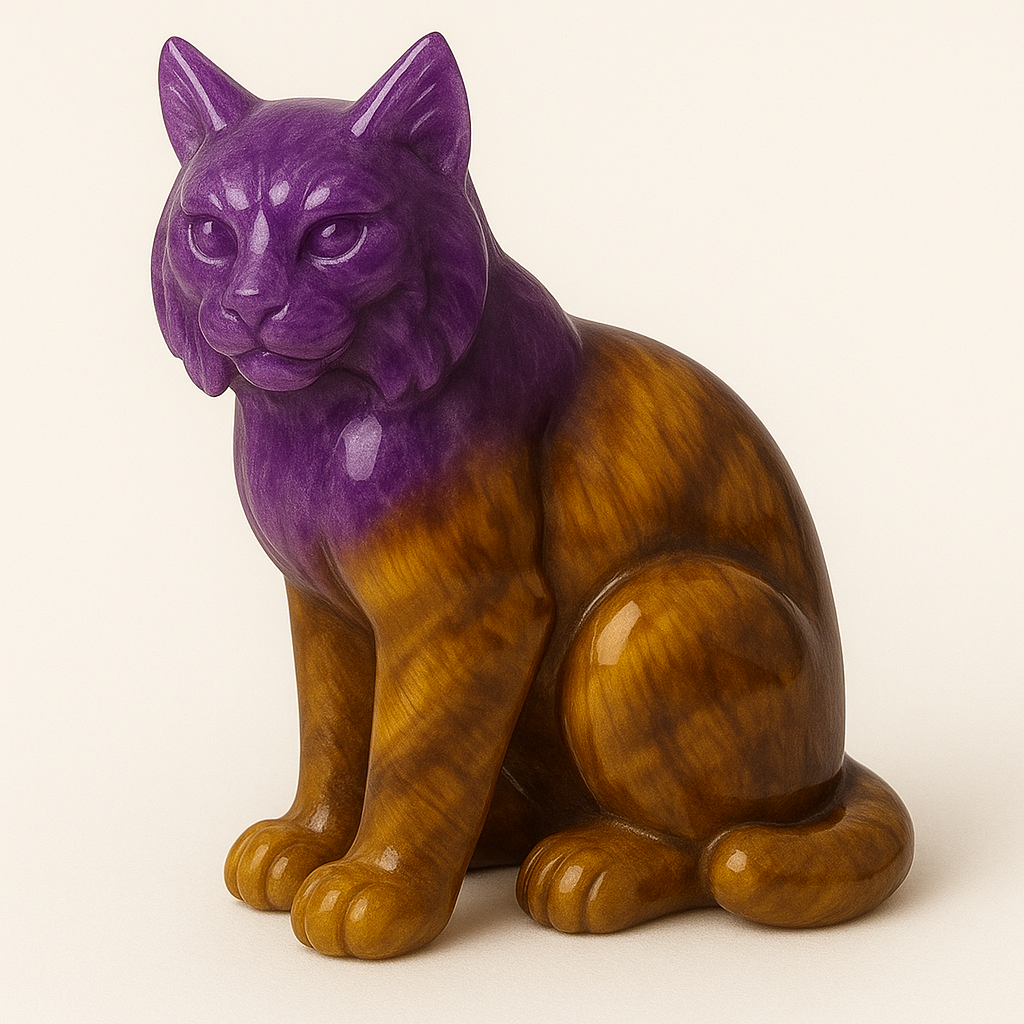
The Symbolism of Bobcats
Share
Elusive, silent, and unbound by the gaze of the world, the bobcat moves with quiet certainty through the twilight of forest and canyon. It reveals little yet sees much. With tufted ears attuned to the subtlest sound, and paws that leave almost no trace, the bobcat is an emblem of secrecy with purpose, power in restraint, and the sovereignty of one who does not explain itself. It is the watcher who need not be seen.
To contemplate the bobcat is to encounter the archetype of focused solitude, of intuition sharpened through silence, and of the self who protects its energy by moving only when the path is clear.
The Silent Hunter in Cultural Memory
Among many Indigenous cultures of North America, the bobcat holds a place of mystery and power, often seen as a keeper of secrets and a guardian of boundary. It appears in stories not as a destroyer, but as a solitary guide, associated with those who walk between worlds and speak only when necessary.
Some traditions viewed the bobcat as the one who could see the truth hidden beneath surfaces, a creature whose gaze pierced the veil of illusion, bringing awareness to what had gone unnoticed. It became a totem of stealthy awareness, of quiet intervention, and of knowing when to reveal and when to remain hidden.
In other folk systems, the bobcat symbolized independence, a creature whose life was not dictated by hierarchy or social demand. Its way is its own, and its medicine teaches the value of energetic protection through discernment.
Stealth, Precision, and the Art of Holding Back
The bobcat does not chase randomly. It waits, often unseen, until the moment is right. Its strength is not in force, but in exactness—knowing when to act, and how to do so with minimal waste of energy. It teaches that movement aligned with clarity becomes sacred action.
It marks territory not with sound, but with subtle cues. It communicates without fanfare, living in the in-between, neither domesticated nor entirely wild. The bobcat reflects the ability to walk the edge between inner world and outer form, always choosing which parts of the self to show.
This feline does not seek the crowd. Its solitude is not exile—it is design. The bobcat teaches that to hold one's energy is not selfish—it is wise, and that a path walked alone is not a lesser path, but a more exacting one.
Resonance with the Energy Centers
The bobcat resonates primarily with the indigo-ray energy center—the third eye chakra, which governs inner vision, discernment, and unseen awareness.
Its silence is not emptiness—it is presence. The bobcat sees what is not spoken, feels what is unexpressed, and moves according to a vision not tied to surface cues. Its indigo-ray quality is that of perception without projection, the deep clarity that comes from observing rather than intervening until called.
There is also a secondary resonance with the yellow-ray energy center—the solar plexus chakra, which governs self-definition, energetic boundaries, and the calibration of self in relation to others.
The bobcat does not confuse aloneness with lack. It is sovereign, not separate. The yellow-ray expresses here as confident autonomy, as the ability to define one's field and hold space for selfhood without apology.
Together, indigo and yellow move through the bobcat as:
vision guided by stillness,
presence held without display,
and identity shaped through inner command, not outer validation.
The One Who Sees Without Sound
To walk with the bobcat is to remember that clarity arises not through reaction, but through stillness, and that not all power announces itself. The bobcat teaches the seeker to hold back until the moment aligns, to protect sacred energy, and to act only when the soul says yes.
The bobcat does not shout.
It listens.
It does not follow.
It knows its path.
It teaches:
Be unseen until seeing matters.
Be still until movement serves.
And be true—without the need to be witnessed.